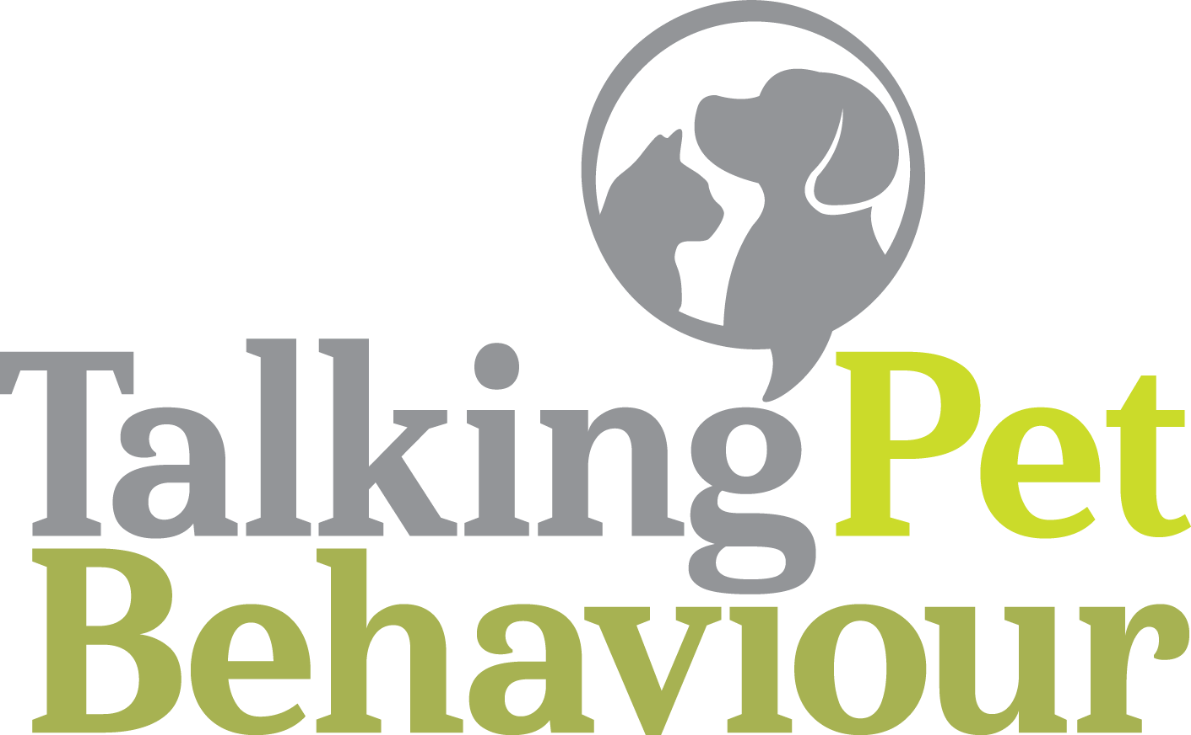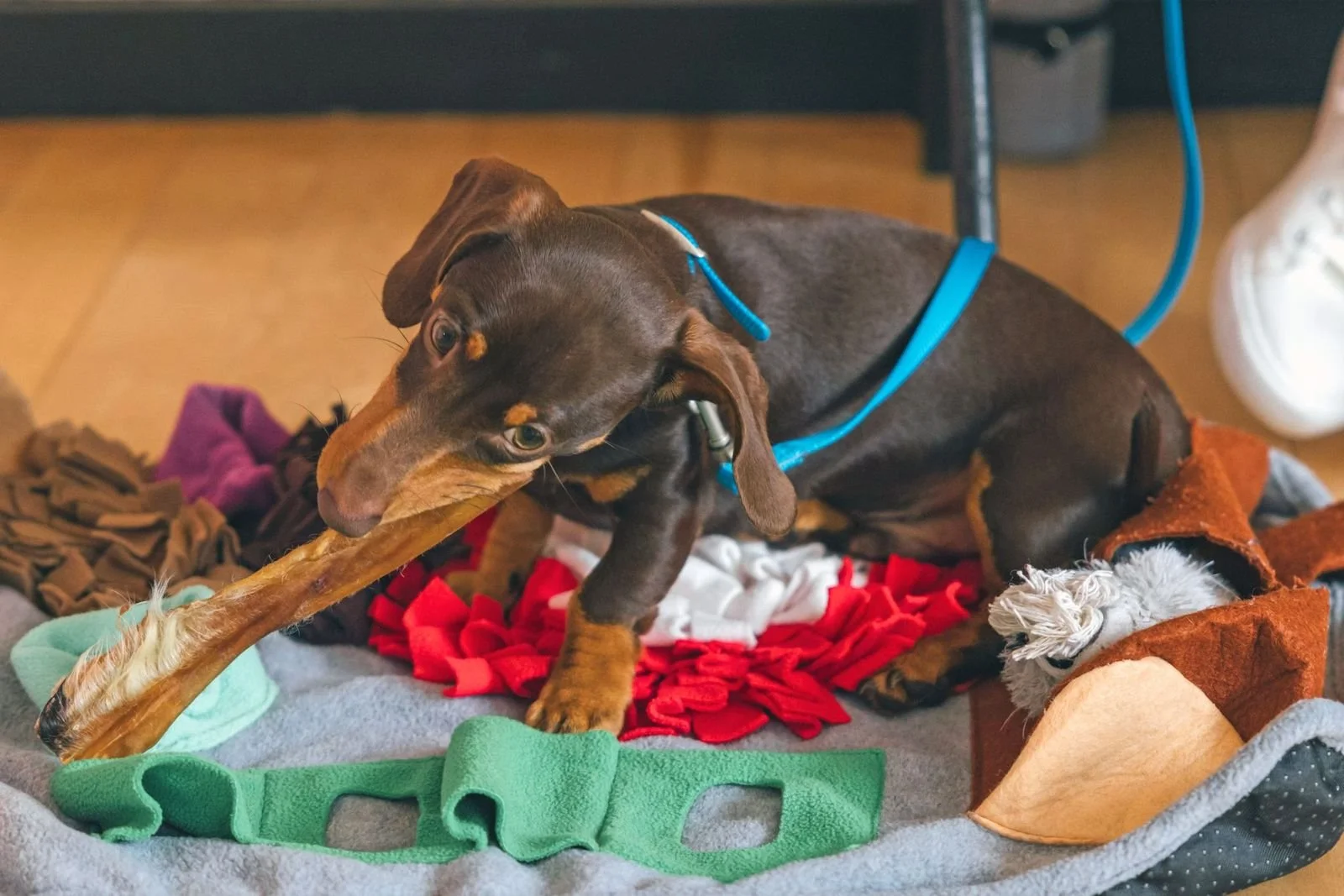Why Puppies Chew – and How to Guide Them in the Right Direction
If you’ve recently welcomed a puppy into your life, you’ll already know they love to chew. At our puppy training classes in Oxford, we hear this question all the time: “Why is my puppy chewing everything?”
Chewing is completely natural – and essential – for healthy development. From easing teething discomfort to exploring the world, it’s part of how puppies learn and grow. The good news? With the right approach, you can protect your home while helping your pup develop great habits.
Why Chewing is a Normal Part of Puppy Development
Exploring the World Through Their Mouths
Young puppies use their mouths to explore, much like human babies. Picking things up, nibbling, and even giving them a good shake is all part of learning.
Teething in Puppies (3–6 Months)
As adult teeth push through, chewing relieves gum discomfort. You might spot tiny blood marks on toys or notice your puppy prefers softer food during this stage.
Adolescent Chewing and Destruction
Around 6–12 months, dogs often enter another chewing phase. By now, they may have developed a “chew preference” for certain textures – from soft beds to wooden table legs. Without redirection, this can easily turn into a habit.
Why Your Puppy Might Chew the Wrong Things
Sometimes chewing isn’t just about teething. Common triggers include:
Hunger – Meals not filling enough.
Boredom – Lack of play, mental stimulation, or walks.
Attention-seeking – Chewing becomes a way to get your focus.
Stress or anxiety – Chewing is self-soothing.
Separation-related behaviour – Destruction when left alone.
Identifying the underlying cause is key to solving the problem, as each has a different solution.
How to Redirect Your Puppy’s Chewing
Stopping chewing altogether isn’t realistic – and it’s not healthy for your puppy. The aim is to guide them towards safe, satisfying options so they can meet their natural chewing needs without wrecking your belongings.
1. Puppy-Proof Your Home
Before your puppy even arrives, think about what they can reach. Shoes, children’s toys, remote controls, and charging cables should be stored away. In our puppy training classes in Oxford, we call this “setting your puppy up for success” – making it easy for them to make the right choice.
2. Provide Safe and Satisfying Chew Items
The more variety you offer, the more likely your puppy is to stick with the right things. Rotate options every few days to keep interest high.
Great choices include:
Rubber chew toys (like Kongs or Toppls – stuff and freeze for teething relief)
Edible chews (pizzles, dried tendons, yak bars – always supervise)
Rope toys (ideal for gentle tug games)
Frozen carrots (safe, soothing, and budget-friendly)
💡 Tip: If your puppy prefers certain textures (e.g. softer or harder items), give them more of what they like – it prevents them seeking it elsewhere.
3. Offer “Destruction Play”
Some dogs are natural shredders. If you don’t give them an outlet, they may choose your cushions instead. Safe options include:
Destruction boxes – a cardboard box filled with scrunched paper and a few treats
Burrow toys – plush toys with hidden pockets for treats or smaller toys
Stuffed paper rolls – cardboard tubes with treats wrapped inside paper
This type of play not only redirects chewing but also offers mental enrichment and builds problem-solving skills.
4. Reward the Right Choices
Every time your puppy chews something appropriate, let them know they’ve nailed it. Praise, stroke, or even pop a treat in the toy they’ve chosen.
In our puppy school in Oxfordshire, we teach owners to “catch good behaviour in the act” – reinforcing what you do want, rather than just reacting to mistakes.
5. Manage the Environment When You Can’t Supervise
Even the most well-trained puppy might make a bad choice if bored and unsupervised. Use:
Baby gates to block off rooms
Playpens to create a safe play zone
Crates (only if your puppy is comfortable and relaxed in one)
Over time, as your puppy learns what’s appropriate, you can gradually remove these barriers.
When to Get Expert Puppy Behaviour Help in Oxford
If chewing comes with aggression, anxiety, or happens mainly when your puppy is alone, it’s worth speaking to your vet or myself, a qualified dog behaviourist. Sometimes dental pain, medical issues, or deeper emotional causes are at play.
Book Your Puppy Training Classes in Oxfordshire
Chewing is normal, but with the right training, enrichment, and management, your puppy can learn what’s okay to chew – and what’s off-limits.
At Talking Pet Behaviour, our puppy training classes in Oxford combine socialisation, essential skills, and behaviour guidance so you and your puppy start off on the right paw.
📅 Find out more and book your space here: Puppy Classes in Oxford




